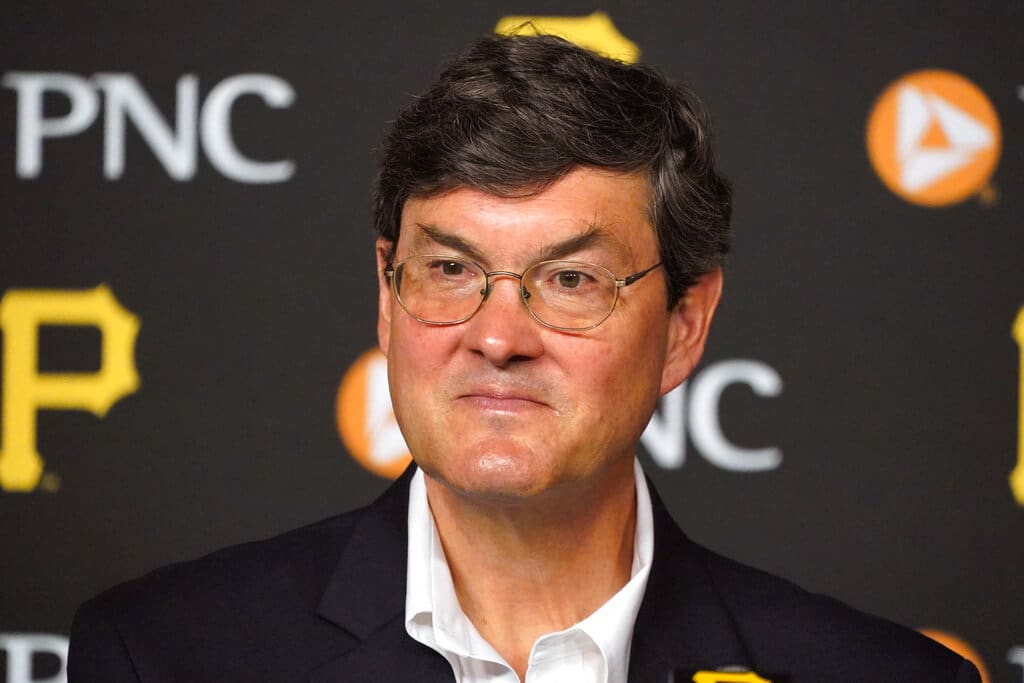Opinion
Breaking Down Major League Baseball’s Salary Cap Conundrum

Major League Baseball is amidst another whirlwind offseason and, as happens most years, the disparity between big spenders and penny pinchers created a rush of dialogue regarding MLB’s financial system of choice, an open-ended Competitive Balance Tax—colloquially referred to as the luxury tax—rather than the hard cap system used by other leagues like the NFL and NHL.
After seeing the Los Angeles Dodgers run wild through the offseason, agreeing to more than $1.2 billion in contract terms, including a record-breaking 10-year, $700 million deal with two-way phenomenon Shohei Ohtani, debates began anew asking whether MLB would be better off opting for a hard cap system to curb rampant spending.
With teams like the Pirates constantly left on the outside looking in, fans and media members alike cite the switch to a salary cap as the sport’s saving grace. On the other hand, many in larger markets ask why their small-market counterparts can’t simply spend their way to respectability with the help of revenue sharing systems—which award roughly $180 million per year to each club—already in place because of national and local TV deals.
No matter how much the discussion rages for or against a hard cap, at the end of the day it’s a moot point. Neither the players nor the owners involved in the collective bargaining process that determines MLB’s financial conduct want a cap system in place. With no one to vote in favor of it, any argument for economic reform is dead in the water. Here’s a look at why that is, ranging from the perspective of the players to the owners.
MLB’s Haves
For teams like the New York Yankees, New York Mets—and, of course, the Dodgers—the argument against a hard salary cap is simple. No guarantees exist in baseball, but the more talent a team can acquire, the better their chances of winning the World Series become.
The luxury tax, which ranges from a 20 to 50 percent tariff on the amount spent over the soft cap, is an annoying thorn in one’s side, of course. Furthermore, exceeding the limit by more than $20 million in a given season comes with scaled penalties stretching from 12 percent to 60 percent.
There are ways to thwart the tax, like deferring salary to a later date as the Dodgers did with Ohtani, but clubs that spend to excess will eventually have to pay the piper when it comes time to write those checks. Even if the Dodgers only end up winning a championship or two with Ohtani, the moves will be considered well worth it… and with the cheapest tickets to Dodger Stadium averaging more than $100 per game this season, there’s a good chance he’ll pay off from a financial standpoint too.
Clubs have spent carefully to avoid the tax in the past, but we’re starting to see that change. Mets owner and hedge fund manager Steve Cohen spent aggressively upon assuming control of the franchise three years ago, trying his best to assemble an Avengers-level superteam. While it hasn’t paid off yet, Cohen’s daring may have ended up breaking the luxury tax dam, as we’ve seen with the Dodgers.
With little to stop them in their pursuit of a championship, what’s not to love about the current system for owners with deep pockets and a desire to spend?
Major League Have-Nots
At the other end of the spectrum are the smaller market clubs, who ostensibly bring in less revenue to fortify their rosters. The aforementioned revenue sharing deals help bridge the disparity between big and small market clubs, and while that $180 million figure—$60 million from national TV deals, as much as $120 million from local ones—fluctuates from year to year, it still makes up a solid chunk of 2024’s $237 million luxury tax threshold.
As is often the case when discussing money, it isn’t that cut and dried. Teams have a bevy of financial considerations to take into account beyond payroll, like the operating cost of employing dozens of coaches and scouts throughout their organization and around the world.
Most small market teams bide their time, waiting for a championship window to open before pushing all their chips to the table… although exceptions exist, like the always-competitive Tampa Bay Rays. While a salary cap could seem like the great equalizer to bridge the gap between market sizes, cap systems don’t just come with a hard limit. They also include spending floors that teams must exceed, and if minimizing risk is the name of the game during periods of hardship, owners won’t want to vote themselves into spending more.
If even the comparatively beleaguered small market owners won’t vote for a cap to help themselves, it’s nearly impossible to spur reforms.
From the Players’ Perspective
Then come the players, who have opposed any discussion of a salary cap because it would put a hole in their profits. Without artificial scarcity stemming from a hard spending limit, bidding wars can become frantic as teams try to lure top free agents.
That may not help the average player much, but there’s still plenty of money to go around. MLB contracts are almost always fully guaranteed: barring extremely abnormal circumstances, players will receive the full value of their base contract, even if they perform poorly or get cut from the team. In salary cap leagues like the NFL where general managers need to ensure future flexibility, guaranteed money is much harder to come by.
When the owners first brought salary cap discussions to the table in the early 1990s, the players responded with a 232 day strike that cancelled the 1994 World Series and left the future of the sport in doubt. During the most recent labor dispute, 2022’s lockout, MLB Players Association executive director Tony Clark put the discussion to bed once again, saying the union would never agree to a cap. If the owners don’t want a cap and the players won’t even table negotiations, discussion amongst fans and media in favor of financial reform is fruitless.
What Happens Next?
With players and owners (both rich and slightly less rich) remaining staunch in their opposition to the cap, what happens next for baseball?
Hopeless though it may seem on the heels of the Dodgers’ wild offseason, the seeds of change could already be spreading. Reports circulated following the 2022 season that the rest of the owners in MLB weren’t happy about Steve Cohen’s free-wheeling spending. While Los Angeles ended up taking the same approach this offseason, it’ll be interesting to see if—and where—the owners decide to draw a line in the sand. If Ohtani and the Dodgers dominate for the next three seasons, the owners could change their tune when the current collective bargaining agreement expires following the 2026 campaign.
Similarly, MLB could be on the cusp of a paradigm shift when it comes to TV deals. The future of regional broadcasting is mired in uncertainty right now, and hundreds of millions of dollars hang in the balance alongside it. With nearly half of the local networks with broadcasting rights declaring bankruptcy during the 2023 season—or remaining on the verge of doing so—things could get ugly fast if the league’s financial model gets upended.
If the winnowing begins, teams may need to scramble to find new broadcasting partners and revenue sources, and who knows could happen with the future of the sport in flux?















